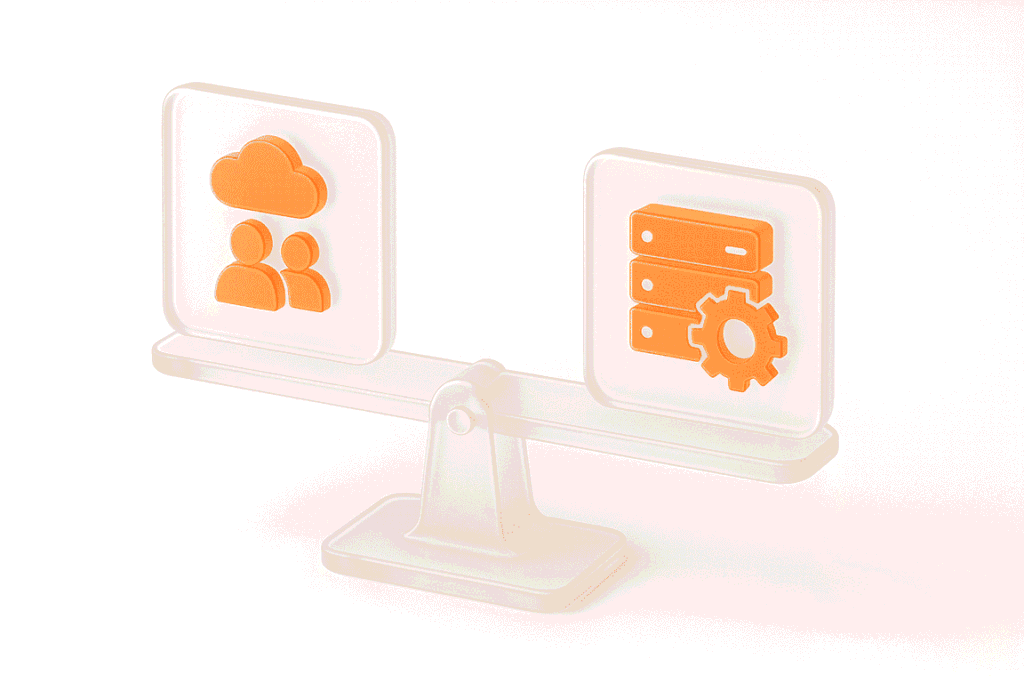Modern software applications rely heavily on seamless interactions between various APIs. But even a minor integration glitch can lead to major user frustrations. Effective API integration testing helps your team catch issues before they impact customers and ensure smooth interactions across all your connected services. This guide will walk you through API integration testing, including REST API integration testing, and explain how teams can effectively validate interactions between different APIs and backend services.
What is API Integration Testing?
API integration testing is the process of verifying that different APIs interact correctly and reliably when integrated into a larger system or application. It focuses specifically on evaluating how APIs exchange data, handle requests, and respond under realistic conditions. Unlike unit testing — which tests isolated components individually — integration testing for API targets the interactions and communication between APIs, services, or modules.
The main purpose of this testing is to identify and resolve issues that only become apparent when multiple APIs work together. By conducting integration API testing, teams ensure that combined API functionality aligns with business logic, delivers accurate data exchanges, and meets performance expectations.
Why API Integration Testing Is Important?
API integration testing is essential for delivering dependable software, especially as systems grow more complex, interconnected, and reliant on third-party services. Here are the primary reasons why teams must prioritize thorough integration testing:
When to Conduct API Integration Testing?
Timing API integration testing correctly helps teams maximize its effectiveness and efficiency. Integrating tests into key phases of software development ensures teams catch and resolve issues at the optimal moments. Here are common scenarios when conducting API integration tests is especially valuable:
After Unit Testing
Once individual units or components of an application have been tested independently, it’s essential to conduct integration testing. Running integration testing for API at this stage validates that individually tested modules or APIs can communicate and function as expected when combined. This helps in identifying any integration issues early in the software lifecycle.
During Continuous Integration Processes
Integrating API tests into continuous integration (CI) workflows ensures constant validation of API interactions. By automating integration tests within CI pipelines, teams can quickly detect and resolve issues every time new code is committed, maintaining a consistently stable and reliable codebase.
Before Major Releases
Before launching major updates or deploying new application features, it’s crucial to thoroughly test API integration. Conducting comprehensive integration testing prior to release verifies that all API changes, updates, and enhancements function smoothly together, significantly reducing the risk of unexpected issues or disruptions in the production environment.
Types of API Integration Testing
Different integration testing types are suited for various scenarios, project sizes, and complexities. The table below outlines the most common types of API integration testing.
| Type | Description | When to Use | Example Scenario |
| Big Bang Integration Testing | All integrated APIs tested together simultaneously. | Small projects or short development cycles. | Integrating several microservices at once for a simple app. |
| Incremental Integration Testing | APIs integrated and tested gradually, one at a time or in logical groups. | Large, complex projects; Agile environments. | Incrementally adding payment, user, and order services. |
| Top-Down Integration Testing | Testing starts from high-level APIs and gradually moves to lower-level services. | Projects where critical functionality is at higher levels. | Testing an application’s main API before lower-level services. |
| Bottom-Up Integration Testing | Testing begins with lower-level APIs, progressively integrating higher-level APIs. | Projects with significant dependencies at the lower-level APIs. | Testing database or logging APIs before main application logic. |
| Sandwich (Hybrid) Integration Testing | Combines top-down and bottom-up approaches, testing APIs at both ends and moving toward the center. | Complex systems where both high-level and low-level APIs are critical. | Integrating UI-layer APIs and database-layer APIs simultaneously. |
| Functional Integration Testing | Validates that integrated APIs meet functional and business requirements. | Ensuring business logic correctness. | Verifying API endpoints for correct business workflow. |
| Non-Functional Integration Testing | Validates API integration against non-functional requirements (performance, security, reliability). | Ensuring reliability, security, scalability. | Load testing integrated APIs before a high-traffic event. |
Common API Protocols for Integration Testing
APIs come in various protocols, each with unique testing considerations, characteristics, and appropriate use cases.
| API Protocol | Description | Key Focus | Usage Scenario |
| RESTful API Testing | Tests APIs based on Representational State Transfer (REST) architecture, emphasizing simplicity, scalability, and stateless interactions. | Validating JSON/XML formats, HTTP status codes, response times, and error handling. | Web applications requiring lightweight, flexible, stateless communication. |
| SOAP API Testing | Involves testing APIs built on Simple Object Access Protocol (SOAP), characterized by strict standards and XML messaging formats. | Validating WSDL compliance, XML schemas, security standards (WS-Security), and error handling. | Enterprise systems demanding rigorous security and reliable message integrity. |
| GraphQL API Testing | Tests APIs utilizing GraphQL query language, enabling clients to precisely define requested data structures. | Schema validation, query optimization, error handling, and response payload accuracy. | Modern applications with complex data needs and efficient client-side data retrieval. |
| gRPC API Testing | Evaluates gRPC APIs, a high-performance, language-agnostic Remote Procedure Call framework leveraging Protocol Buffers for serialization. | Validating data serialization, RPC functionality, performance metrics, and latency handling. | High-performance microservices requiring efficient inter-service communication. |
| Webhooks Testing | Verifies APIs utilizing Webhooks for asynchronous callbacks triggered by specific events or conditions. | Event-driven response validation, security/authentication, endpoint availability, and payload verification. | Real-time notification scenarios such as payment gateways, messaging services, or third-party integrations. |
Core Components of API Integration Testing
To perform effective API integration testing, it’s important to focus on several core components. These components ensure thorough validation and help developers confidently release robust, error-free applications:
Key Benefits of API Integration Testing
Thorough API integration testing delivers significant benefits, directly impacting the overall quality, reliability, and performance of software systems. Teams investing in detailed integration tests can expect to experience these important advantages:
Best Practices in API Integration Testing
API integration testing requires careful planning and meticulous execution. Implementing well-established best practices ensures thorough testing coverage, reliable API integrations, and robust software performance. Below, we explore comprehensive and practical strategies to enhance your API integration testing process.
Effective Dependency Management
Integration tests typically involve external dependencies such as databases, third-party APIs, or microservices. Managing these dependencies effectively ensures that integration tests remain reliable, consistent, and easy to reproduce.
Recommended approach:
Comprehensive Data Validation and Schema Testing
Robust integration testing demands strict validation of data formats, structures, and schema compliance. This ensures data consistency across APIs and prevents integration failures from unexpected or malformed data.
Recommended approach:
Rigorous Security Testing
API integration points often present vulnerabilities due to exposure to external data and services. Prioritizing security testing safeguards systems against common threats, ensuring robust, secure API interactions.
Recommended approach:
Comprehensive Performance and Load Testing
Integration testing must validate API performance under realistic conditions to ensure APIs respond quickly, reliably, and consistently, even during high-traffic periods. For more information, check out our best api load testing tools list.
Recommended approach:
Detailed Error Handling Verification
Proper error handling significantly enhances user experience and simplifies debugging. Integration testing should verify that APIs clearly and consistently handle and communicate errors.
Recommended approach:
Versioning and Compatibility Testing
API integrations regularly evolve, involving changes to functionality, payload structures, or request formats. Effective integration tests must verify backward compatibility and smooth transitions across API versions.
Recommended approach:
Automated Integration Testing within CI/CD Pipelines
Automation significantly increases the efficiency and accuracy of integration testing. Integrating automated tests into your development pipelines provides immediate feedback, reducing manual intervention and human error.
Recommended approach:
Contract Testing
Contract testing ensures provider and consumer APIs match agreed-upon interfaces. It’s particularly beneficial for validating third-party integrations, internal microservices communication, and verifying API contracts against expectations.
Recommended approach:
Monitoring, Alerts, and Logging
Proactive monitoring and robust logging during integration tests help rapidly identify and resolve issues, significantly reducing debugging efforts.
Recommended approach:
Using Realistic Test Data
Integration tests should reflect realistic scenarios. Employing accurate, diverse, and meaningful test data ensures APIs behave as expected in production environments.
Recommended approach:
Final Word
API integration testing covers a wide array of methodologies, protocols, and best practices. Mastering all these elements and ensuring flawless API interactions can be challenging, even overwhelming. If you’re looking for a professional team to support you through comprehensive integration testing and beyond, PFLB offers expertise, advanced testing tools, and proven solutions. Our specialists can guide you from initial planning to the final deployment, ensuring your APIs function seamlessly and securely.





